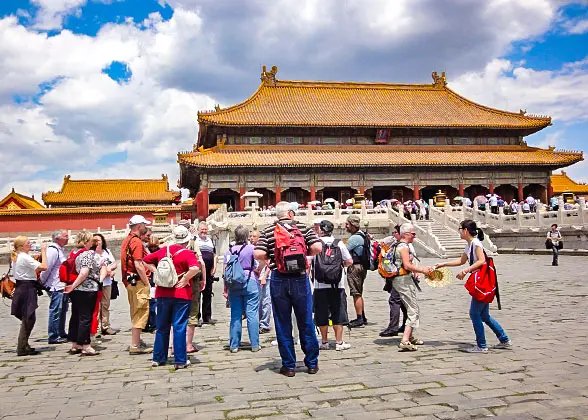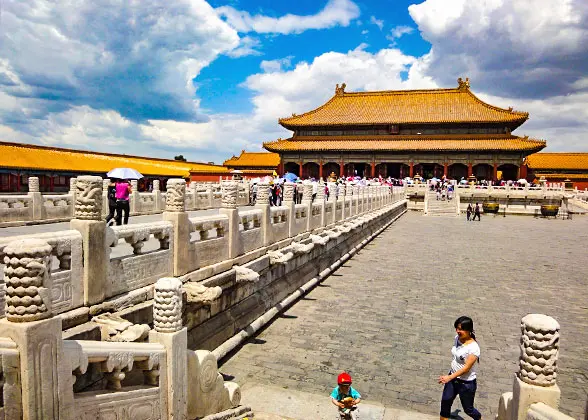Palace of Heavenly Purity (Qianqinggong)
Go through the Gate of the Heavenly Purity (Qianqingmen), and you'll encounter the Palace of Heavenly Purity (Qianqinggong). Built in 1420, it was both the bedroom and workplace for 16 emperors. By 1722, it had evolved into an office and banquet area.
As the grandest palace within the Forbidden City's inner court, it boats the premier architecture and many intriguing tales.
The Palace of Heavenly Purity was built as the most honorable palace within the Inner Court in the Forbidden City.
With a spacious area of 1,400 square meters (15,069 square feet) and a towering height of 31.36 meters (103 feet) from its pedestal to the eaves, it boasts a double-eaved roof with upturned corners. Covered in yellow glazed tiles, a symbol of imperial power, its eaves corners are adorned with nine ridge animals, just one shy of the Hall of Supreme Harmony's ten.
On either side of the palace, walls enclose cozy suites, while the second floor houses sacred lofts dedicated to gods and Buddhas. A passage corridor at the back connects the main hall seamlessly to the Hall of Celestial and Terrestrial Union and the Palace of Earthly Tranquility.
Step into the main hall, where a majestic dragon throne sits center stage, with a desk ahead and a gilded screen behind. Above, a plaque proclaims "Integrity and Brightness". Surrounding the throne were flat mirrors carved with dragons. A bronze crane censer, an enamel incense holder, and a large cloisonné censer adorned the floor in front. Adjacent small suites, totaling 27 beds, served as the emperor's retreat.
The interiors of the Palace of Heavenly Purity above, while seemingly uncomplicated, hold hidden secrets.
 "Integrity and Brightness" Plaque & Secret Succession System
"Integrity and Brightness" Plaque & Secret Succession System
While the words on the plaque suggest openness and fairness, they actually marked a secret spot. Emperor Yongzheng (1678~1735) concealed the name of his chosen heir in a box behind it, which would be revealed and announced upon his death.
This was a necessary precaution, as in the past, emperors had publicly named their eldest son as the crown prince, often leading to fierce competition, strife, and even murder among the siblings. To avoid such family disputes, Yongzheng came up with this ingenious plan.
 Why 27 Beds? – The Palace Maids' Rebellion
Why 27 Beds? – The Palace Maids' Rebellion
Ming Emperor Jiajing (1507-1567) sought the elixir of life, believing it required the blood of virgins. He brought countless young girls into the palace as maids for his lusts and alchemical experiments, causing great sufferings.
In October 1542, over a dozen palace maids seized their chance to strangle him with yellow silk as he slept. In haste, they tied a tight knot, allowing the emperor to narrowly escape. In response, the maids were put to death by dismembering the body.
To protect himself from their spirits, Jiajing installed 27 dragon beds, making his whereabouts unpredictable. Eventually, he fled to the west garden of the Forbidden City, returning only on his deathbed.
 Four “Magic” Mirrors to Expel Demons
Four “Magic” Mirrors to Expel Demons
In the Palace, there are four large mirrors placed behind and in front of the throne. According to ancient Chinese feng shui wisdom, these mirrors could reflect and disperse unfavorable energy or evil spirits. Also, they compensate for the hall's lack of natural light, drawing all eyes to the emperor's throne—a subtle reminder of the unmatched power of the imperial reign.
On the wide platform of the Palace, a bronze turtle and crane stand as symbols of longevity. To the east, a sundial whispers of the emperor's control for time, while to the west, a jialiang, a standard grain measure, underscores his wish for the nation's bounty.
Gilded bronze pavilions, inscribed with "jiangshan" (the territory) and "sheji" (the gods of the land and grain), stand tall on both sides, proclaiming the emperor's reign over all. In front of the Palace, four gilded incense burners would release fragrant smoke during ceremonies, casting a sacred aura.
A royal pathway leads straight to the Gate of Heavenly Purity, used exclusively by the emperor; while officials take the stairs on either side.
 "Tiger Den" Beneath the Platform
"Tiger Den" Beneath the Platform
On both sides of the white marble platform in front of the Palace are three small gates, known as the "Tiger Den", despite never having housed tigers. They served as pathways for maids and eunuchs, who, as servants, were forbidden from using the steps reserved solely for the emperor.
The Palace of Heavenly Purity is flanked by a host of buildings that catered to every need of the imperial family. These include the Tea House and Kitchen, the Duanning Hall for storing the emperor's crowns and clothes, the Clock House with Western clocks, the Jingshi House for official documents, the Maoqin Hall for the emperor's library, and the Imperial Pharmacy with a room for doctors.
After its completion in 1420, the Palace of Heavenly Purity served as the emperor's main living quarters. The empress and other concubines could enter the palace as summoned by him. Occasionally, the emperor also summoned officials here.
Between 1644 and 1722, the palace's functions expanded. Besides resting, the emperor held court here to listen to state affairs, summoned officials, interviewed civil servants, received foreign envoys, read and studied, and reviewed memorials.
After Emperor Kangxi's passing in 1722, his successor, Emperor Yongzheng, found the Palace of Heavenly Purity would evoke too many emotions due to the many reminders of his late father, and he then resided in the Hall of Mental Cultivation. Consequently, the Palace ceased being the emperor's bedroom and shifted into an administrative center and banquet area.
 Banquet for the Elderly
Banquet for the Elderly
The "Banquet for the Elderly" remains the largest ever held in the Palace of Heavenly Purity. In 1785, Emperor Qianlong, inspired by his grandfather Emperor Kangxi's (1654~1722) banquet, invited over 3,000 elders aged 65 and above, including officials and civilians. The aim was to showcase prosperity, share wealth, and promote respect for the elderly.
The feast consumed an astonishing amount of food: 850kg (1,874 pounds) of pork, 850 chickens, and 850 ducks. It cost a whopping 80,000 taels (3,040kg/6,700 pounds) of silver and remains the largest banquet ever held in the Palace of Heavenly Purity.
Constructed in 1420, the Palace of Heavenly Purity has faced at least five fires, with its current form restored in 1798.
 Emperor Zhengde’s (1491-1521) “Grand Fireworks Display”
Emperor Zhengde’s (1491-1521) “Grand Fireworks Display”
In 1514, during the lantern festival, the Palace of Heavenly Purity was adorned with a dazzling array of lanterns, which unexpectedly ignited the palace, causing it to be engulfed in flames.
As the fire spread rapidly, Emperor Zhengde went by and witnessed the blazing inferno. Instead of showing concern or panic, he joked, “What a grand fireworks display this is!” This incident became a symbol of his reign, characterized by recklessness and indulgence.
 Next:
Next:
Go north to see the Hall of Celestrial and Terrestial Union (Jiaotaidian).
 Further Reading:
Further Reading:
How to visit the Forbidden City
‘Banquets for a Thousand Seniors’ in the Forbidden City
Ancient Festival Lanterns in the Forbidden CityAs the grandest palace within the Forbidden City's inner court, it boats the premier architecture and many intriguing tales.
Architectural Highlights of the Palace of Heavenly Purity
Structure: The Most Honorable within the Inner Court
The Palace of Heavenly Purity was built as the most honorable palace within the Inner Court in the Forbidden City.
|
|
With a spacious area of 1,400 square meters (15,069 square feet) and a towering height of 31.36 meters (103 feet) from its pedestal to the eaves, it boasts a double-eaved roof with upturned corners. Covered in yellow glazed tiles, a symbol of imperial power, its eaves corners are adorned with nine ridge animals, just one shy of the Hall of Supreme Harmony's ten.
On either side of the palace, walls enclose cozy suites, while the second floor houses sacred lofts dedicated to gods and Buddhas. A passage corridor at the back connects the main hall seamlessly to the Hall of Celestial and Terrestrial Union and the Palace of Earthly Tranquility.
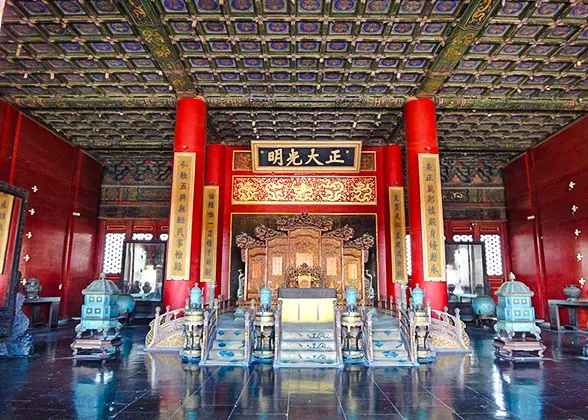 |
| Palace of Heavenly Purity's Interior |
Interior: Simple with Hidden Secrets
Step into the main hall, where a majestic dragon throne sits center stage, with a desk ahead and a gilded screen behind. Above, a plaque proclaims "Integrity and Brightness". Surrounding the throne were flat mirrors carved with dragons. A bronze crane censer, an enamel incense holder, and a large cloisonné censer adorned the floor in front. Adjacent small suites, totaling 27 beds, served as the emperor's retreat.
The interiors of the Palace of Heavenly Purity above, while seemingly uncomplicated, hold hidden secrets.
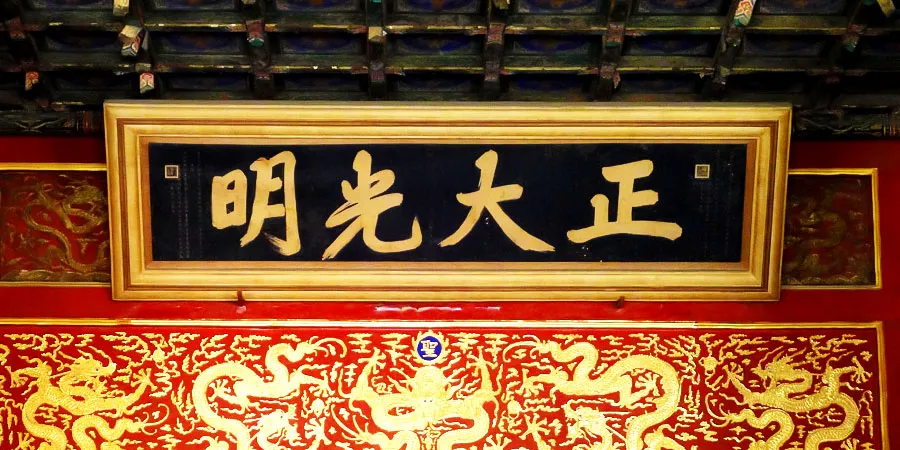 |
| "Integrity and Brightness" Plaque |
While the words on the plaque suggest openness and fairness, they actually marked a secret spot. Emperor Yongzheng (1678~1735) concealed the name of his chosen heir in a box behind it, which would be revealed and announced upon his death.
This was a necessary precaution, as in the past, emperors had publicly named their eldest son as the crown prince, often leading to fierce competition, strife, and even murder among the siblings. To avoid such family disputes, Yongzheng came up with this ingenious plan.
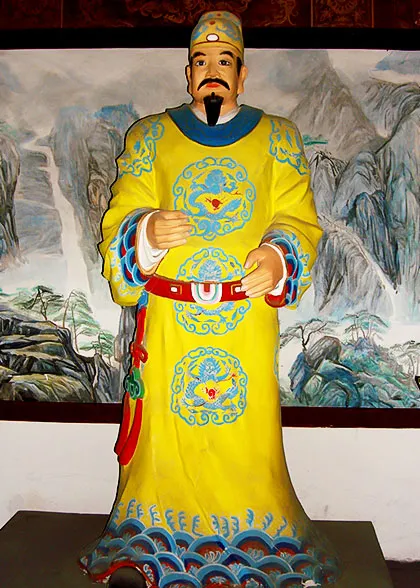 |
| Statue of Emperor Jiajing (1507~1567) |
Ming Emperor Jiajing (1507-1567) sought the elixir of life, believing it required the blood of virgins. He brought countless young girls into the palace as maids for his lusts and alchemical experiments, causing great sufferings.
In October 1542, over a dozen palace maids seized their chance to strangle him with yellow silk as he slept. In haste, they tied a tight knot, allowing the emperor to narrowly escape. In response, the maids were put to death by dismembering the body.
To protect himself from their spirits, Jiajing installed 27 dragon beds, making his whereabouts unpredictable. Eventually, he fled to the west garden of the Forbidden City, returning only on his deathbed.
In the Palace, there are four large mirrors placed behind and in front of the throne. According to ancient Chinese feng shui wisdom, these mirrors could reflect and disperse unfavorable energy or evil spirits. Also, they compensate for the hall's lack of natural light, drawing all eyes to the emperor's throne—a subtle reminder of the unmatched power of the imperial reign.
Symbolic Outer Decorations
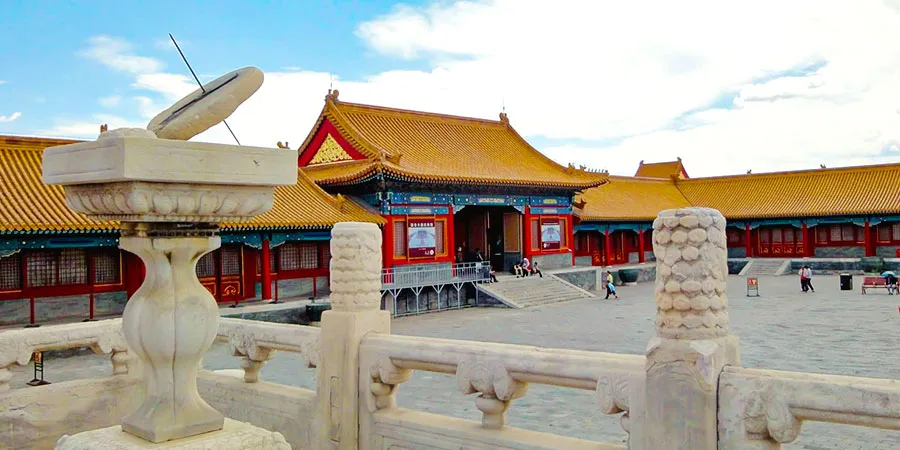 |
| Sundial outside the Palace |
On the wide platform of the Palace, a bronze turtle and crane stand as symbols of longevity. To the east, a sundial whispers of the emperor's control for time, while to the west, a jialiang, a standard grain measure, underscores his wish for the nation's bounty.
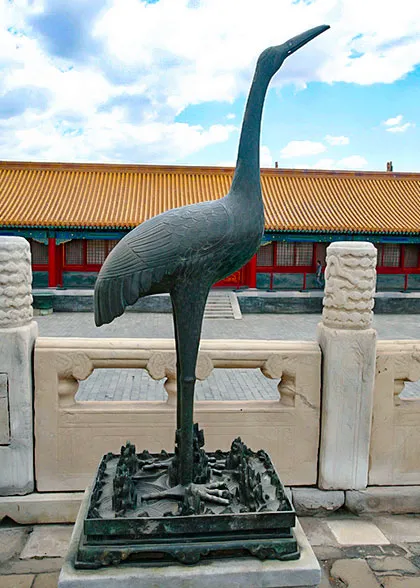 |
Gilded bronze pavilions, inscribed with "jiangshan" (the territory) and "sheji" (the gods of the land and grain), stand tall on both sides, proclaiming the emperor's reign over all. In front of the Palace, four gilded incense burners would release fragrant smoke during ceremonies, casting a sacred aura.
A royal pathway leads straight to the Gate of Heavenly Purity, used exclusively by the emperor; while officials take the stairs on either side.
On both sides of the white marble platform in front of the Palace are three small gates, known as the "Tiger Den", despite never having housed tigers. They served as pathways for maids and eunuchs, who, as servants, were forbidden from using the steps reserved solely for the emperor.
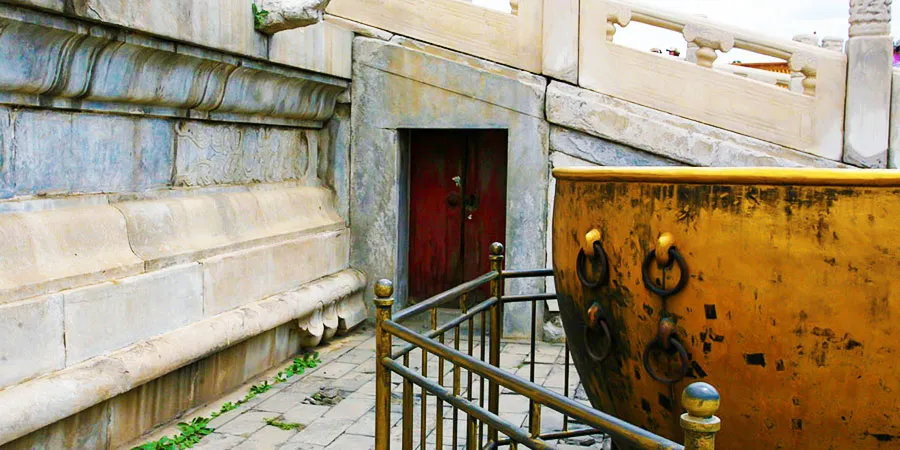 |
| "Tiger Den" |
Surrounding Buildings: Serving for the Imperial Household
The Palace of Heavenly Purity is flanked by a host of buildings that catered to every need of the imperial family. These include the Tea House and Kitchen, the Duanning Hall for storing the emperor's crowns and clothes, the Clock House with Western clocks, the Jingshi House for official documents, the Maoqin Hall for the emperor's library, and the Imperial Pharmacy with a room for doctors.
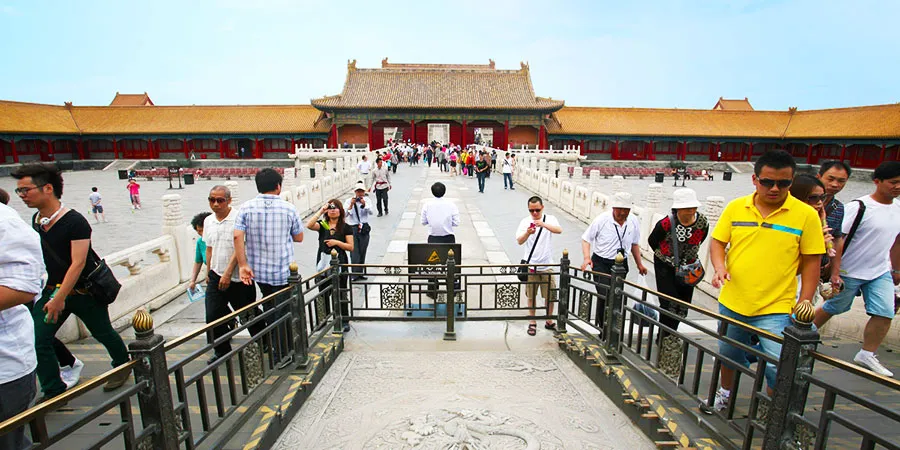 |
| Rooms around the Palace of Heavenly Purity |
What was the Palace of Heavenly Purity used for?
From 1420 to 1722: Emperor’s Primary Residence & Venue for Handling Daily Affairs
After its completion in 1420, the Palace of Heavenly Purity served as the emperor's main living quarters. The empress and other concubines could enter the palace as summoned by him. Occasionally, the emperor also summoned officials here.
Between 1644 and 1722, the palace's functions expanded. Besides resting, the emperor held court here to listen to state affairs, summoned officials, interviewed civil servants, received foreign envoys, read and studied, and reviewed memorials.
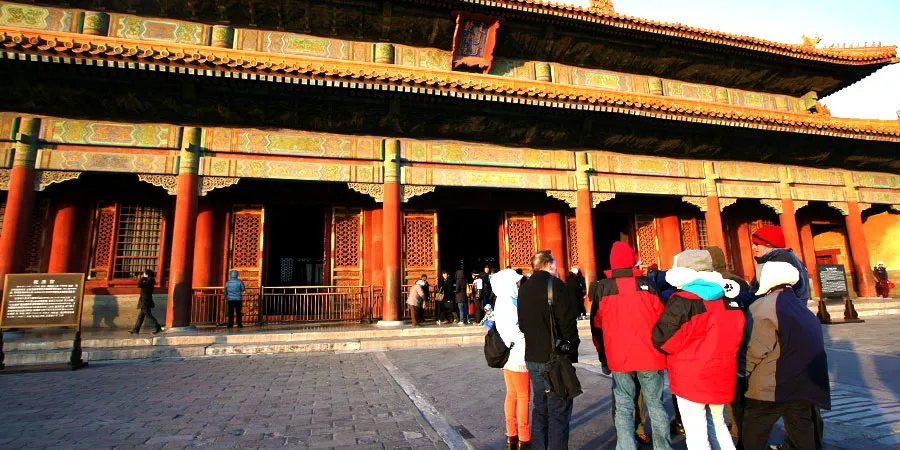 |
| Palace of Heavenly Purity |
From 1722 to 1911: Administrative Center & Banquet Area
After Emperor Kangxi's passing in 1722, his successor, Emperor Yongzheng, found the Palace of Heavenly Purity would evoke too many emotions due to the many reminders of his late father, and he then resided in the Hall of Mental Cultivation. Consequently, the Palace ceased being the emperor's bedroom and shifted into an administrative center and banquet area.
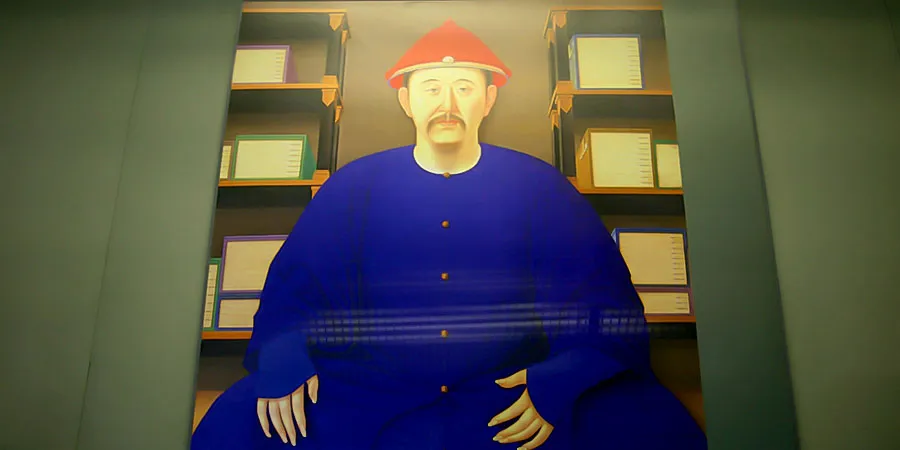 |
| Emperor Kangxi (1654~1722) |
The "Banquet for the Elderly" remains the largest ever held in the Palace of Heavenly Purity. In 1785, Emperor Qianlong, inspired by his grandfather Emperor Kangxi's (1654~1722) banquet, invited over 3,000 elders aged 65 and above, including officials and civilians. The aim was to showcase prosperity, share wealth, and promote respect for the elderly.
The feast consumed an astonishing amount of food: 850kg (1,874 pounds) of pork, 850 chickens, and 850 ducks. It cost a whopping 80,000 taels (3,040kg/6,700 pounds) of silver and remains the largest banquet ever held in the Palace of Heavenly Purity.
When Built – History of the Palace of Heavenly Purity
Constructed in 1420, the Palace of Heavenly Purity has faced at least five fires, with its current form restored in 1798.
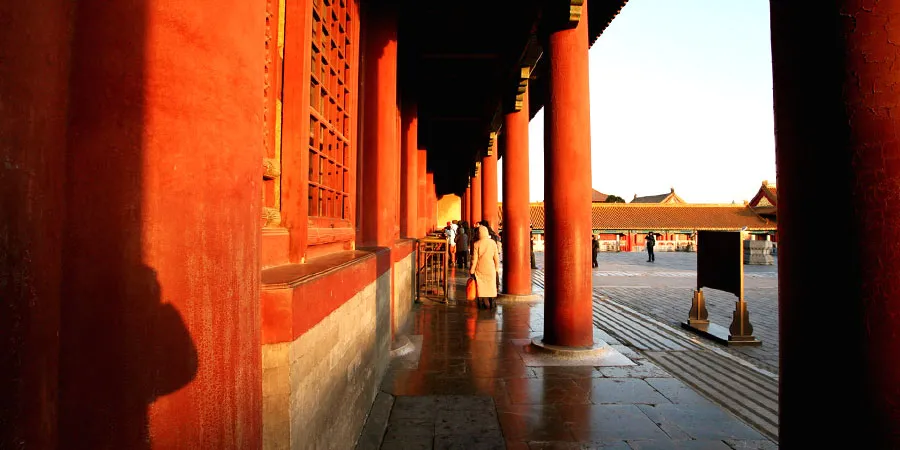 |
| A Corridor of the Palace of Heavenly Purity |
In 1514, during the lantern festival, the Palace of Heavenly Purity was adorned with a dazzling array of lanterns, which unexpectedly ignited the palace, causing it to be engulfed in flames.
As the fire spread rapidly, Emperor Zhengde went by and witnessed the blazing inferno. Instead of showing concern or panic, he joked, “What a grand fireworks display this is!” This incident became a symbol of his reign, characterized by recklessness and indulgence.
Go north to see the Hall of Celestrial and Terrestial Union (Jiaotaidian).
How to visit the Forbidden City
‘Banquets for a Thousand Seniors’ in the Forbidden City
Miraculous Sundials in the Forbidden City
Smallest Palace in the Forbidden City
'Tiger Caves': Secret Passages in the Forbidden City
- Last updated on May. 19, 2025 by Jally Zhang -
